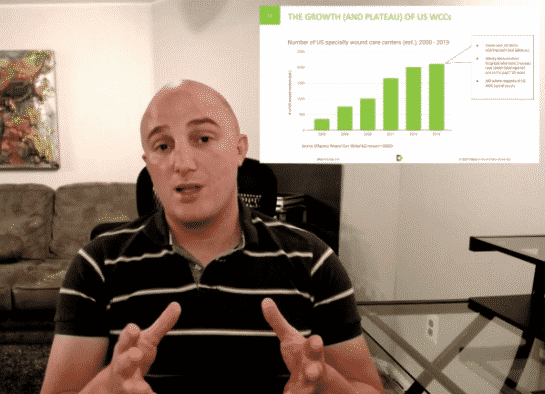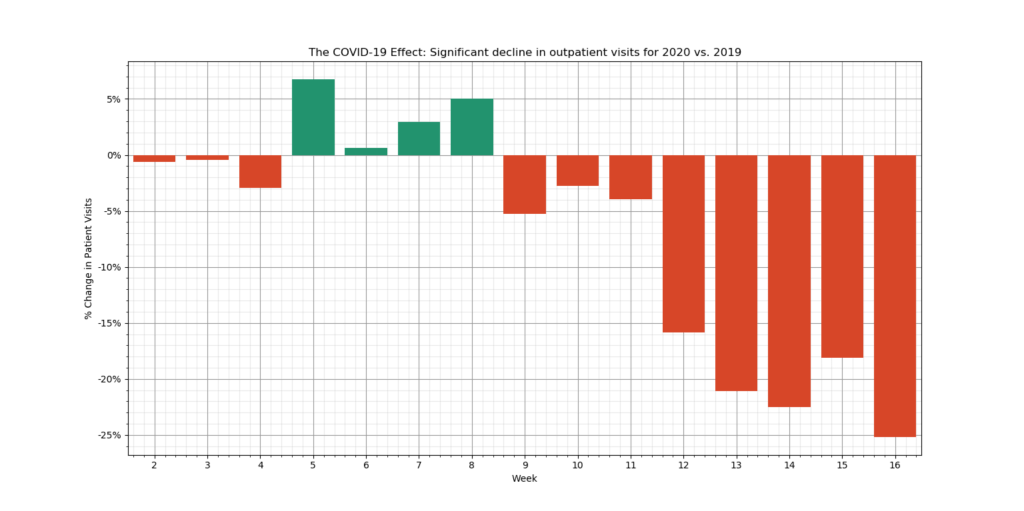Advanced wound care’s position in the evolving COVID-19 landscape Global economies have been slammed by COVID-19 in the first part of the year. Some biomed sectors, such as PPE, respiratory, and telemed solutions, have seen unprecedented demand for increased production/availability and new innovation alike. On the other hand, orthopedics, plastics, and other service lines with a traditionally large mix of elective consultations and procedures, have absolutely been hit hard. Generally speaking, healthcare systems have taken a hit as they shift clinical resources from their most lucrative revenue drivers to critical care preparedness and treatment. However, when it comes to the supply and demand interplay of COVID-19 on the advanced wound care industry, the results are more nebulous. Even across geographies, the question of whether wound care is an “essential” service line is currently being interpreted differently, depending on who you ask. For example, in several countries across Europe, most wound care clinics are closed. In the US, most wound care clinics remain open–though a significant number are operating on a part time (ex: Tuesdays and Thursdays only, or only half-day hours). Of those operating on a full-time schedule, many are seeing significant patient volume reductions compared to the same period in 2019. From both operational and commercial perspectives, the implications are significant. Forward-thinking executives and investors need to understand and actively plan for the possible scenarios and consequences of their actions (or lack thereof). The operational data, on-the-ground insights, and their implications [T]he keenest wound care executives and investors use real world data not just for making claims about physical products (though that is important, too). By combining data analytics with on-the-ground insights to stress test operational and commercial hypotheses, firms can stay one step ahead of the news cycle. The result is the ability to out-plan, out-invest, and out-compete in the wound care arena, and to be prepared for the possible consequences of their moves. Anecdotally, year-over-year (YOY) volume reductions range from 10% to 40% or more. The figure below shows data, collected and analyzed by Tissue Analytics from across several US clinics that use its wound care measurement and assessment software. It shows a very clear YOY reduction in weekly patient visits of around 5% in early March 2020, steadily growing to 25% as of 17 April 2020 (the most recent data published as of this writing): According to Tobe Madu, the Tissue Analytics data scientist who conducted the analysis, “For this analysis we looked at outpatient clinics since these are the facilities most likely affected by the COVID-19 lockdown mandates. Only clinics that were fully integrated with Tissue Analytics as of the first week of 2019 were considered. The data points presented in weekly intervals corrects for daily fluctuations and reveals a clear decreasing trend for patient visits.” Of critical importance is also the notion of whether the reductions in patient encounters are among existing patients who may be told by their providers to come at less frequent intervals (ex: fortnightly instead of weekly), or perhaps the patients themselves decide to skip appointments, ostensibly due to COVID-19 fears. Likewise, relaxed US telemed reimbursement and restrictions allow for easier remote monitoring and consultations even as clinic-based visits dip. In such cases, we might expect to see a short-term stabilization once a new comfort level in terms of visit frequency vs. COVID-19 risk is met. Clinically, wounds may heal more slowly (lower frequency of debridement, fewer advanced product applications, less utilization of HBOT, etc.), but would supposedly still allow for effective patient triage in most cases. Alternatively, are patient volume reductions driven by a reduction in new wound care patient admissions to the clinic? In other words, are patients in treatment during the early months of of 2020 continuing to come as normal until healed (around ~8 to 15 weeks on average, depending on the case mix and clinical outcomes of the particular facility), yet new wound patients are hesitant to schedule their first appointment? If this is the case–which my gut told me is more likely–then we might expect a continued patient volume free-fall, combined with a major risk of tragic clinical outcomes (including amputation, sepsis, and death) from delayed treatment in the coming weeks and months. Many of these patients will eventually burden emergency rooms, inpatient acute care units, and SNFs, who will inevitably treat the fevers, weakness, elevated white blood cell counts, and other presentations as COVID-19 until test results and a full clinical assessment confirm that the patients’ neglected wounds are the more likely root cause of the symptoms. I asked Tobe from Tissue Analytics about my hypothesis: That patients already receiving treatment pre-pandemic may be likely to continue, but that new patients with wounds may not be scheduling new admissions. If so, then the drop in patient visit volume would be likely to continue beyond the current 25%. Tobe was able to work his data analytics magic to dig into this, too: Tobe further articulated what the above data visualizations tell us: “When we compare the pre-lockdown (wks. 3-11) and post-lockdown (wks. 12-16) period, new patients account for 15% of the decline in average outpatient clinic visits per week. Last year, for the same time period, new patients represented a mere 3% of the increase in total patient visits. The decline in new patient visits appears to be a legitimate concern moving forward even though new patients only represent ~10% of the patient population.” Of course, a larger facility sample size and a few more weeks of data would be beneficial. Likewise, Tissue Analytics’ outpatient customer base may skew towards larger, IT-resourced health systems. Having said that, the data pattern suggests one of two possibilities, either: We may not yet have seen a bottom for outpatient wound center visit volumes. Wound care center operations are fueled by new patient admissions. If new patients are not being admitted to post-acute settings (a good amount are likely ending up in acute settings), then we might expect an ~8-15 week lag for the most severe





